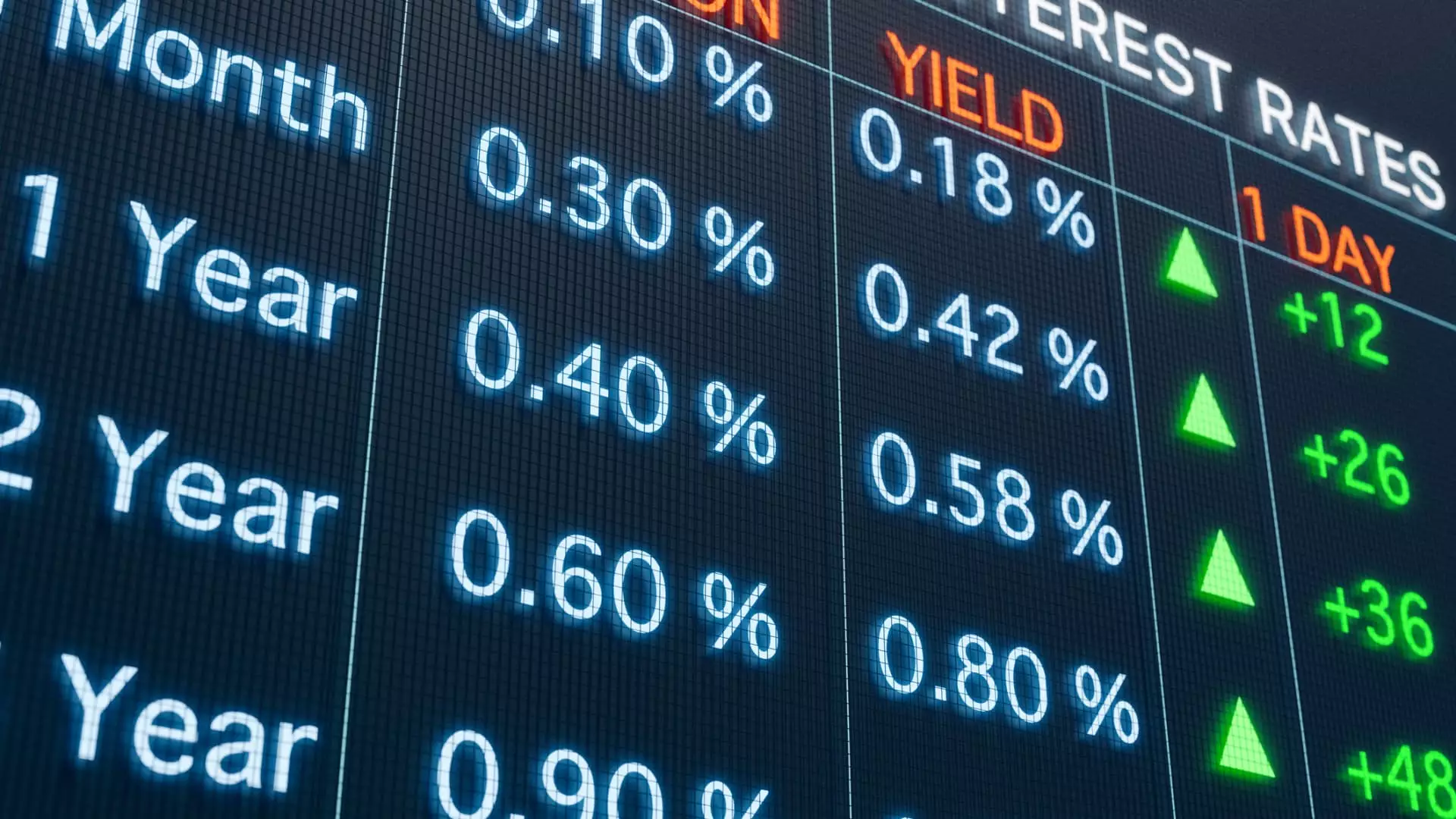In recent weeks, the bond markets have defied expectations set by the Federal Reserve’s narratives on monetary easing. While policymakers led us to believe that a modest interest rate cut would signal a pathway toward economic stability, bond traders have responded with skepticism and even skepticism bordering on hostility. The sharp rise in long-term Treasury yields, particularly the 10-year and 30-year notes, exposes a fundamental disconnect between central bank intentions and market realities. This divergence is not just a technical anomaly; it’s indicative of deeper issues concerning inflation control, investor confidence, and the health of the economy.
A key takeaway from this week’s bond auction is the rising yields—10-year notes hitting above 4.1% and 30-year bonds nudging toward 4.76%. These figures are stark, especially considering that just months ago, yields were approaching historic lows. The implication? Investors are no longer convinced that rate cuts from the Fed will have the desired effect of fostering prolonged economic growth without igniting inflationary pressures. The market’s response suggests it perceives the central bank’s move as insufficient or possibly misguided, which in turn, raises questions about the credibility of Fed’s forward guidance.
The so-called “buy the rumor, sell the news” phenomenon has taken firm hold. The Fed artfully lowered rates, creating bursts of enthusiasm in equities, but at the same time, bond traders viewed this move as a trigger to offload long-term holdings. Why? Because longer-dated bonds are inherently sensitive to inflation expectations and future rate trajectories. When yields jump despite a rate cut, it signals market concern: the system might be overestimating the effectiveness of monetary policy, or worse, underestimating inflationary persistence.
The Hidden Signal for Investors and the Broader Economy
What do higher long-term yields really mean for the average American, especially those contemplating major investments such as buying a home or car? The connection is clear: rising yields translate directly into higher borrowing costs. Mortgage rates, which follow the trajectory of long-term Treasury yields, have edged upwards after reaching a three-year low. This is no coincidence. The Fed’s rate cut, instead of easing financial conditions across the board, appears to be a double-edged sword. While equities have soared, the cost of financing essential purchases for consumers increases, potentially suffocating the fragile recovery.
Moreover, the recent underperformance of homebuilders like Lennar underscores the real-world consequences. Weak housing market data, coupled with elevated mortgage rates, hampers affordability and slows activity. This is a stark reminder that monetary policy is not wielded in a vacuum; every rate adjustment reverberates through various sectors, often in unpredictable ways.
Another critical insight emerges from the broader economic indicators. Despite the Fed’s efforts to soften the labor market with rate cuts, unemployment filings remain benign—an ostensibly positive sign. However, this masks an underlying tension. The bond market’s reaction suggests that fears of an overheating economy or persistent inflation remain valid. When long-term yields climb, it often signifies that investors anticipate future inflation or a shift in the monetary stance. This contradiction complicates policymakers’ efforts to strike a perfect balance.
The International Dimension and the Risks of complacency
It would be shortsighted to view these developments solely through a domestic lens. Global bond markets have also been trending higher in yields, reflecting a shared concern about inflation and economic policy effectiveness worldwide. Foreign central banks are adjusting their strategies in tandem, adding a layer of complexity to the U.S. bond market’s signals.
But perhaps the most dangerous misconception in the current narrative is that rising yields are purely a sign of a healthy economy cooling off from overly aggressive stimulus. In reality, they may be a harbinger of more severe instability if they accelerate unchecked. Elevated long-term yields increase the cost of public and private debt, constraining fiscal flexibility and potentially cooling economic growth more than intended. This may force policymakers into a corner where further rate cuts become less effective or even impossible, risking a hard landing.
Furthermore, the obsession with short-term market reactions neglects the bigger picture. Markets aren’t just trying to gauge central bank intentions—they are responding to a complex web of global economic signals, inflation expectations, and fiscal pressures. Ignoring these signs risks fostering complacency, much like the pre-2008 atmosphere where market calm masked underlying vulnerabilities.
The cautionary note from economists like Chris Rupkey underscores the peril of overinterpreting yield declines. Just as falling yields have historically signaled an impending recession, current rises could suppress job creation or signal that the economy is not as resilient as it seems. The bond market’s nuanced signals suggest that the real challenge lies not in whether rates are cut or raised, but in managing expectations and risks before confidence, and ultimately stability, unravels.


Leave a Reply